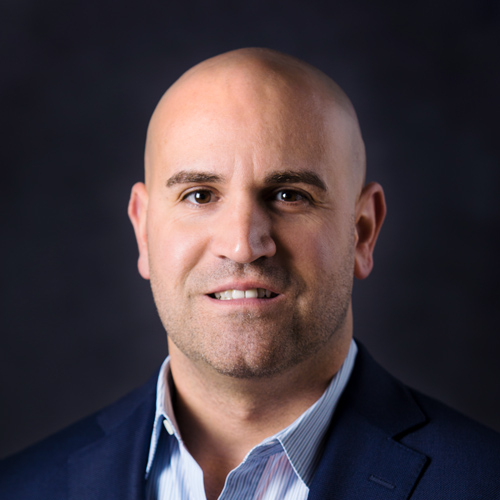When Stephen Wall came on board as director of construction for Austin, Texas-based Zoës Kitchen, he was fueled by a tangible excitement set forth by its founder Archie Andrews, who spearheaded the family-friendly restaurant chain in 1997.
Since Andrews launched the health-conscious business, that atmosphere has become a reflection of the restaurant’s corporate culture, which is grounded in mutual respect. This means that everyone from the cooks to the CEO have a voice and are key ingredients to the company’s success and growth.
And Wall is all about growth—both professionally and in the service of his employers. After earning an architecture degree from Texas Tech, he started out working for a firm in a small town, designing “gyms, barns, church expansions, and whatever came in the door.”
From there, Wall moved to a larger firm, and then to FedEx, where he was a consultant during that company’s rapid period of FedEx Office expansion.
Zoës Kitchen By The Numbers
Number of locations:
260
Number of states:
20
Largest footprint:
3,600 square feet
Smallest footprint:
2,200 square feet
Average capital expenditures per store:
$750,000
Employees:
5,000+
Vision of growth:
400 restaurants by 2020
“FedEx was where I got the idea that there was another side to construction, and that I could learn to go do this on the corporate side,” Wall says. It’s this same curiosity that led him next to Yum! Brands, where he eventually became director of construction for Pizza Hut. This would be his last tenure before moving on to Zoës.
“The interesting thing about Zoës is that it’s the exact opposite of what Yum! is,” Wall explains. “Yum! is heavily driven by franchise growth. You’re really trying to build a model and a kit of parts that the franchisee can take and execute. So you’re focused on how you make things easier for people to go execute the one idea.”
For instance, when Wall began his career at Zoës, the company had about 160 restaurants.
“The idea of coming in and being part of something with this growth potential really attracted me,” Wall recalls. “You’re the one stuck with the consequences. You come up with the idea, and then you have to go execute it yourself.”
When it comes to execution and problem-solving, Wall has adopted the strategy to always “lead with the why.”
“If you lead with the why, you’re generally going to get a better handle on the problem,” he says, “and you’re going to get buy-in. Let’s understand why a problem exists, and then empower people to make decisions and then hold people accountable for those decisions.”
During one of his first projects for Zoës, the why was clear: An existing Zoës Kitchen in South Carolina had been flooded, with as much as 70 inches of water in the restaurant. Getting the space rebuilt and up and running again as fast as possible was crucial.
In addition to working closely with the landlord to prevent future flooding and remediate existing issues in the building, Wall also added on a climate-controlled patio to the 2,300-square-foot store. With louver screens, a misting system, and heaters, the patio expanded the store’s capacity by roughly 30 seats in both the summer and winter seasons.
“That was a great example of, ‘Here’s a problem, Stephen. Go figure it out.’ They gave me the respect and trust to go execute on such an important project,” Wall says.
At a shop in South Carolina, the challenge was to keep the existing restaurant open while an expansion was underway. “We had to be very focused on the budget here,” Wall says.
His plan called for an expansion of the kitchen with more storage space and a reconfigured wash area, but most of the work was done on the existing footprint, using existing equipment.
“We had some tough conversations with the operators about what was viable and what wasn’t,” he says. Wall adds, though, that by working together to set expectations and limit the work that was done during hours of operation, the project came off on budget and on schedule.
In San Antonio, Wall was tasked with turning a former big-box store into a Zoës Kitchen, a challenge both structurally and aesthetically. The store had an elevation change of 30 inches from the front door to the interior space, so Wall went about installing a ramp down to the queuing area, bi-level seating, and exterior seating at the entry level.
“We try to drive home the Mediterranean colors and bring the outside to the inside with the patios and windows,” Wall says. “We always do end caps or corners and emphasize natural light. We want to promote the lifestyle of the Mediterranean, the inside and outside living.”
Patios will play a starring role in a new prototype he’s developing, and the Mediterranean theme is carried through in smaller aesthetic choices, such as an “herb wall” of graphics that highlight Zoës’ use of fresh herbs and produce, a sun-soaked color palette, and large communal tables that encourage sharing and family meals.
From its start in Texas, Zoës Kitchen has now expanded as far north as Kansas City and east to Philadelphia. As the company continues to grow in the Midwest, Wall will continue fine-tuning strategies that will allow Zoës locations to maintain a unified identity, yet continue to adapt to the individual needs of each site and each city.
“We’re truly here building a brand at this point,” Wall says. “The groundwork that I lay over the next six to eight years is going to be the legacy for whoever comes in behind me.”


